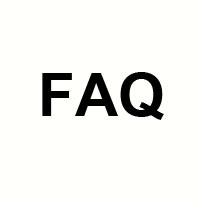|
FREQUENTLY ASKED QUESTIONS (FAQ’s) ABOUT MOLD
1.What is fungi(mold)?
Molds, yeast and other certain related forms constitute the organisms known as fungi. We have all seen fungi growing on rotten fruit, bread and damp leather. They may be green, black, or white and may appear to be fuzzy or sooty.
Fungi are plant-like: many consist of tow parts: Hyphae, which are fungal filaments that form the body and spores, which are seed-like structures that can be used for reproduction. Some spores contain Myco toxins and been termed "toxic mold". Fungi must subsist on organic matter such as wood or paper products. In order for fungi to thrive, the following conditions are necessary:
- An ambient temperature range of 40 to 100 degrees Fahrenheit. Mold is also ubiquitous in nature, making up approximately 25% of the earth's biomass, and thrives in many outdoor environments.
- A humid rich environment, generally greater than 60% humidity though usually greater than 70%.
 2. Why is mold a potential concern?
2. Why is mold a potential concern?
Mold(microbial agents) may cause four main types of illnesses in humans.
- Allergic illness
- Irritation
- Infectious disease
- Toxic effects
Microbial agents may serve as irritants to the respiratory tract causing an increase in mucus flow and other types of symptoms. These agents may cause infections in two manners:
- Pathogenic infection: This can develop in a relatively healthy individual with a normally functioning immune system.
- Opportunistic infection: This can develop in an individual with a compromised immune system or those with or on chemotherapy, diabetics. Asthma, or antibiotics, HIV or AIDS, physical or mental conditions affecting the immune system
Some factors responsible for the concerns are the ability of the agent becoming airborne in sufficient concentrations and the ability of the agent to be respired by the susceptible host.
3. Are there any buildings more vulnerable to mold growth?
Regarding residential structures, any dwelling with a history of current water infiltration problems as well as those structures with consistently high indoor humidity levels or those with poorly designed components such as inadequately vented attics and crawl spaces, as well as, poorly designed or maintained HVAC systems.
4. How do I know if mold is present within a dwelling?
Mold growth should be inspected when surfaces are discolored i.e. "mildew" or if damp mildew odor is present which can represent mold by-products such as; microbial volatile organic compounds "MVOC's". This is especially true on organic surfaces.
5. If mold growth is suspected what should be done?
A trained indoor environmentalist or a certified industrial hygienist should be consulted to determine the presence of mold, its cause, and cure i.e. Storch Environmental Services, Inc.
6. Are there any threshold limits in which mold is a concern?
Because all individuals have varying degrees of sensitivity to mold there are currently no threshold limit values.
7. What is toxic mold?
Toxic mold refers to certain mold species that have spores that contain mycotoxins such as stachybotrys. Mycotoxins are opportunistic pathogens and may be a greater health concern for certain individuals.
8. If mold is confirmed within the indoor environment what should be done?
Depending on the amount and depth of the mold growth, the solutions may range from removing mold via HEPA vacuuming and washing. To the extreme of removing and replacing all effected material, it is strongly suggested that only those with specific training and experience conduct any mold remediation work.
9. How can mold be prevented?
Mold requires several conditions to thrive. An organic material i.e. cellulose(paper/wood), oxygen, appropriate ambient temperature, a high moisture content and or a high ambient relative humidity of 60% or greater. The most controllable factor of these conditions is the moisture content, which is usually controlled by removing the moisture sources i.e. water infiltration and or reducing and maintaining the indoor ambient humidity level to below 60%.
|